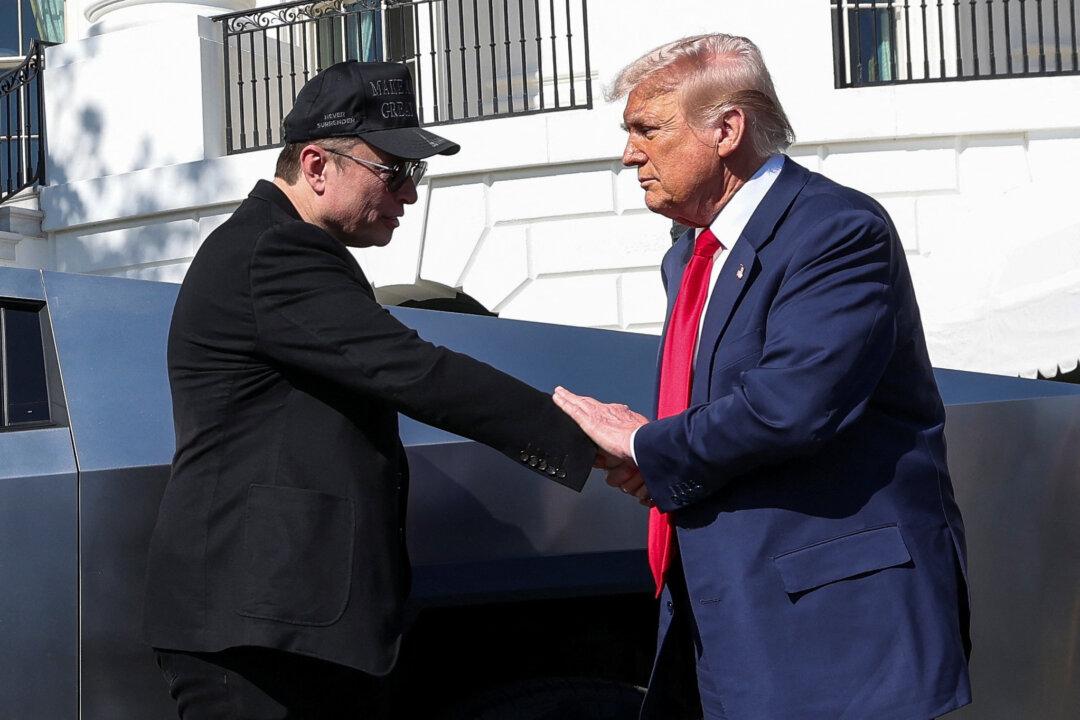WASHINGTON—President Joe Biden stepped out of his meeting with Kenyan President William Ruto on May 23 announcing several joint initiatives. These include promoting Kenya as a major non-NATO ally and a “vision” of debt reform that provides hundreds of billions of dollars in lending capacity to international financial institutions such as the World Bank and the International Monetary Fund (IMF).
Among the several initiatives announced by his administration in a joint written statement, President Biden specifically confirmed at the post-meeting press conference that his administration was working with Congress to designate Kenya a major non-NATO ally and to make it the first African country to receive funding through the CHIPS and Science Act.
The president called Kenya’s alliance promotion a fulfillment of the two nations’ joint counterterrorism operations against ISIS and al-Shabab, mutual support for Ukraine, and upcoming work in Haiti.
Mr. Ruto is still prepared to send 1,000 police officers to quell gang violence in Haiti. Those forces will be bolstered by forces from The Bahamas, Barbados, Benin, Chad, and Bangladesh, while the United States continues to provide equipment and information to avoid, as President Biden put it, “looking like America, once again, is stepping over and deciding ’this is what must be done.'”
President Biden also announced what his administration calls the “Nairobi–Washington Vision.”
It is an initiative that will “mobilize more resources for countries saddled with debt” and “promote transparent, sustainable, and affordable lending practices” for developing countries, he said.
It calls on nations and international financial institutions such as the World Bank and the IMF to make those resources available. The Biden administration looks to lead by example, announcing billions of dollars in available funds for developing countries.
President Biden said the United States is providing $250 million to the World Bank’s International Development Association’s Crisis Response Window, and, in the coming weeks, additional lending of up to $21 billion will be made available to the IMF to support financing needs in the poorest countries.
He also announced $250 billion “in new lending capacity for multilateral development banks like the World Bank to help low-income nations invest in their development.”
“There’s debt and there’s growth, and ... you got to deal with the debt before you deal with the growth,” President Biden said. “And so we’re trying to be using national lending organizations to be able to provide that capability so people can grow.”
Mr. Ruto said it was “imperative” that the United States take a leading role in a comprehensive debt resolution framework by doubling its contributions to the World Bank and the IMF.
This announcement comes after Kenya’s debt-to-GDP ratio topped 70 percent, according to the Associated Press, with much of it owed to China. Kenya recently sought to build a new railway connecting the port city of Mombasa to the Rift Valley via its capital city, Nairobi. It was to be a key project of China’s Belt and Road Initiative, and the $4.7 billion project was paid mostly by loans.
In the leadup to this official visit, White House national security adviser Jake Sullivan said the two leaders would discuss how they could have “a fairer international financial system where all countries are treated equally.”
President Biden said this plan was supported by many other countries but did not provide any specific examples.
The Biden administration also announced deepening partnerships in matters of trade and education. Along with the goals of investing in Kenya’s “Silicon Savannah” through the CHIPS and Science Act, the administration announced the “Kennedy–Mboya Partnerships program.” It is a new STEM-focused educational exchange program named for the friendship between former President John F. Kennedy and Kenyan political activist Tom Mboya that brought hundreds of Kenyans to the United States for higher education.
The meeting also marked the launch of the “Kenya Urban Mobility and Growth Threshold Program,” which provides $60 million in economic assistance through the U.S. government’s foreign aid agency the “Millennium Challenge Corporation.”
The U.S International Development Finance Corporation announced that it would be increasing its portfolio in Kenya to more than $1 billion. Several private sector deals were also confirmed, including The Coca-Cola Co.’s commitment to investing $175 million in the East African nation.
The administration also reemphasized its green energy agenda, praised Mr. Ruto’s Africa Green Industrialization Initiative (AGII), and launched a U.S.–Kenya Climate and Clean Energy Industrial Partnership, which is intended to “elevate climate action and green industrialization as a critical pillar of [the] bilateral relationship.”
“The United States and Kenya intend to leverage the successful model of President Biden’s “government-enabled, private-sector-led” approach to sustainable economic growth through the Partnership for Global Infrastructure and Investment (PGI) and mobilize multilateral financial, technical, and regulatory support across public and private sectors to realize the vision of AGII,” the administration said in its statement.
The meeting also proceeds the second installment of the U.S.–Africa Nuclear Energy Summit between the Department of Energy and Kenya and Ghana. Scheduled for August 2024 in Nairobi, it will focus on industry readiness, addressing critical issues affecting the future of nuclear energy on the African continent, and underscore the ways nuclear power can be used to reach Net Zero by 2050.
Mr. Ruto’s visit is the first formal state visit of an African leader since 2008, when then-President George W. Bush welcomed Ghanaian President John Kufour.







